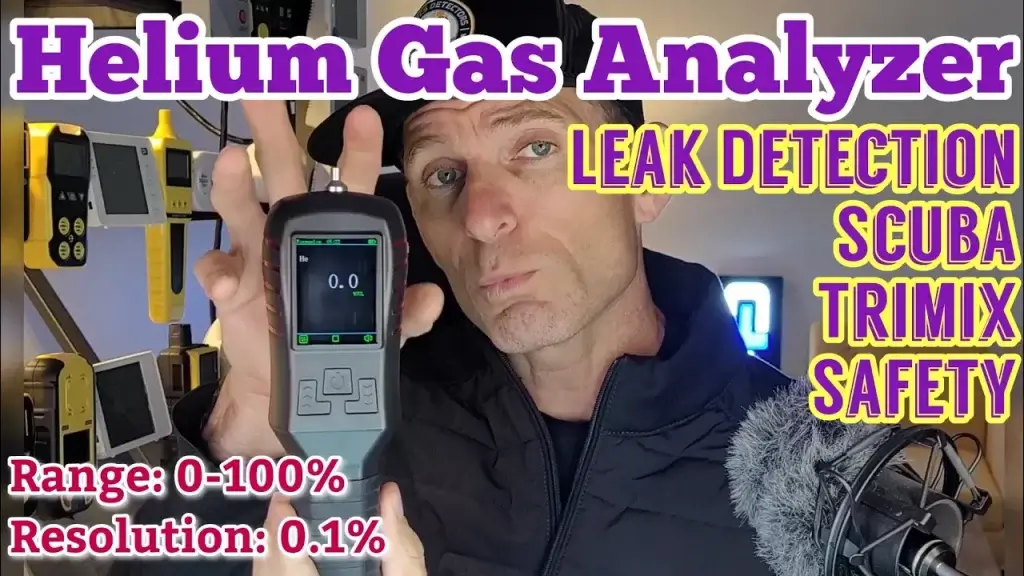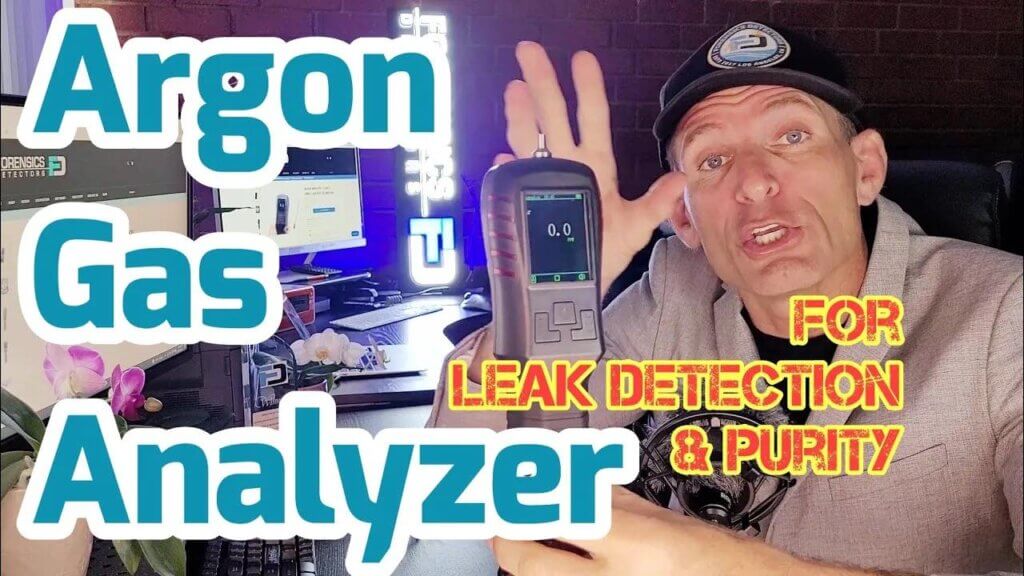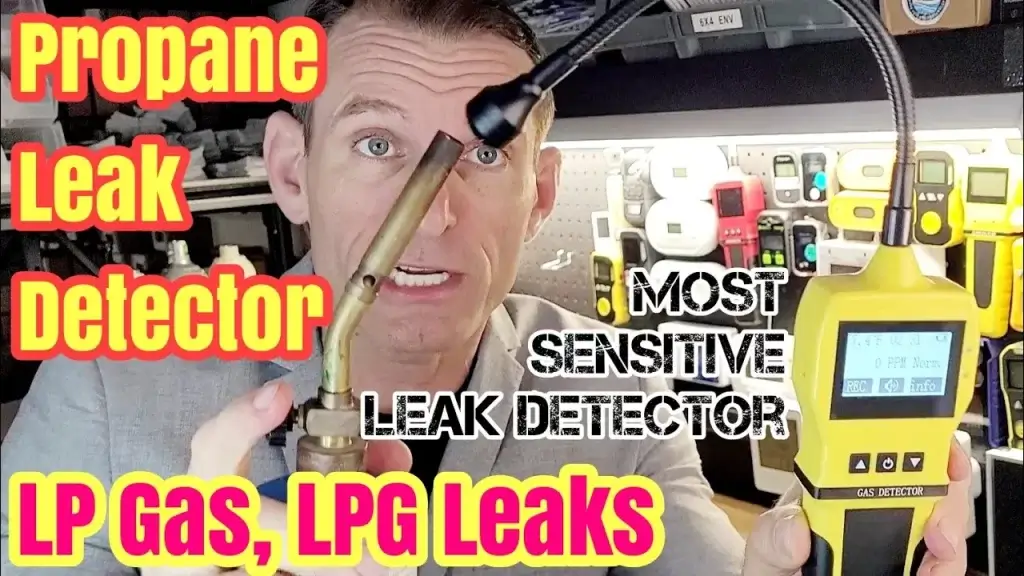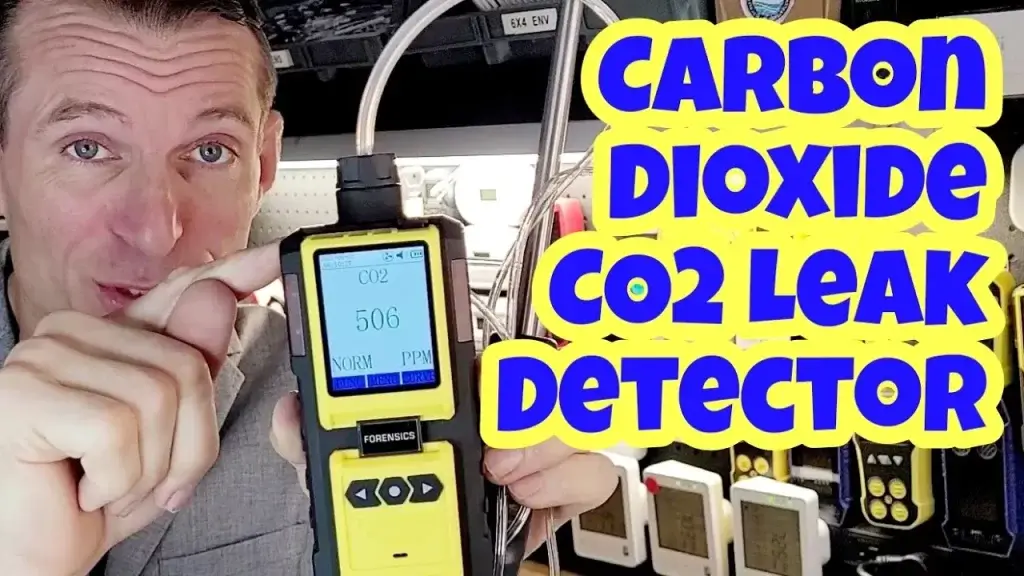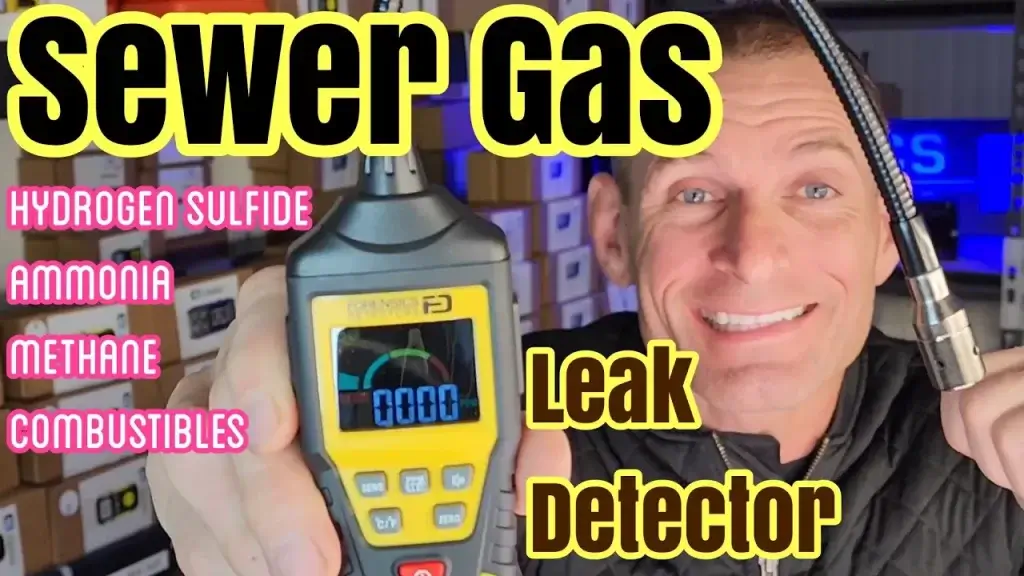Contents
- Best Helium Leak Detector
- What is Helium Gas?
- What is a Helium Leak Detector?
- Helium Gas Leak detector necessities?
- How Does a Helium Gas Sensor Work?
- Helium Gas Detection Applications?
- Is Helium Gas Dangerous for Home?
- Types of Helium Gas Leak Detectors
- Mass Spectrometer Leak Detectors
- Sniffer Probes
- Electronic Leak Detectors
- Tracer Gases and Vacuum Pumps
- How Does a Helium Gas Leak Detector Work?
- Helium Gas Leak Detector Considerations?
- Who Uses a Helium Gas Leak Detectors
- Helium Gas Leak Detector Tips
- How Much Does a Helium Gas Leak Detector Cost?
- Does Helium Leak More Than Air?
- Leak Rate for a Helium Leak Detector?
- Is the Helium Leak Test Safe?
- What is the difference between a Helium for Leak Detector and a Helium Leak Checker?
- Helium Detector Calibration?
- How is A Helium Leak Detector Used?
- What is the Difference Between a Vacuum Leak Detector and a Helium Leak Detector?
- What is Helium Leak Detection and its Uses?
- Conclusions
- The Author
Best Helium Leak Detector
Helium gas detection employs helium gas as a tracer gas which is an inert gas with low density, necessitates gas detection to ensure safety. Although helium is commonly known for its use in inflating party balloons, helium plays a crucial role in various industrial applications. The use of a helium leak detector is essential to prevent any leakage of this valuable gas in many instruments. Helium is widely used in welding, diving, rocket propulsion, cryogenics, MRI, processing, meteorology, and research & development and helium leak detection has a critical technical support function.
| ✅ Pros | ☢️ Cons |
| ✅ Helium Gas Leak Detectors are sensitive and find helium tracer gas leaks | ☢️ Helium Gas is a limited commodity and not abundant, also it can be expensive |
| ✅ Helium Gas Leak Detectors cost between $1000 to $5000 | ☢️ Helium Gas can displace oxygen in confined spaces and suffocate humans |
| ✅ Helium Leak Detectors employ Thermal Conductivity Gas Sensors | ☢️ Helium Gas Leak Detectors are specialized gas analyzers and can be expensive and hard to access |
| ✅ Helium Leak Detection is a methodology where a tracer gas, which is helium, is pressurized in pipes, a system, a instruments, and the detector sniffs for any helium leaks | ☢️ Helium gas is a greenhouse gas and contributes to global warming |
What is Helium Gas?
Helium gas is a colorless, odorless, and non-flammable element, symbolized as He in the periodic table. It is the second-lightest element in the universe, second only to hydrogen.
Helium’s unique properties, such as low density and high thermal conductivity, make it valuable for various applications. It remains in a gaseous state even at extremely low temperatures and is often used to cool scientific instruments, superconducting magnets, and medical imaging equipment.
Additionally, its non-reactive nature makes it suitable for leak detection, where it can easily escape through tiny openings, enabling accurate identification of leaks. Helium’s presence in diverse industries, from healthcare to manufacturing, highlights its significance in advancing technology and enhancing safety measures.
What is a Helium Leak Detector?
A Helium Leak Detector is a sophisticated apparatus designed to identify and locate leaks within systems utilizing helium gas. Renowned for its remarkable lightness and non-reactive properties, helium serves as an ideal tracer gas for detection purposes.
This detector operates on the principle of identifying helium molecules that escape from compromised areas, even when present in minuscule quantities. By employing various detection methods such as ionization, absorption, or thermal conductivity, these detectors ensure heightened sensitivity to helium molecules.
This capability allows them to pinpoint leaks swiftly and accurately, contributing significantly to safety protocols. Helium gas leak detectors are indispensable tools for industries and homes alike, enabling preemptive measures against potential hazards and reinforcing the importance of prompt leak detection.
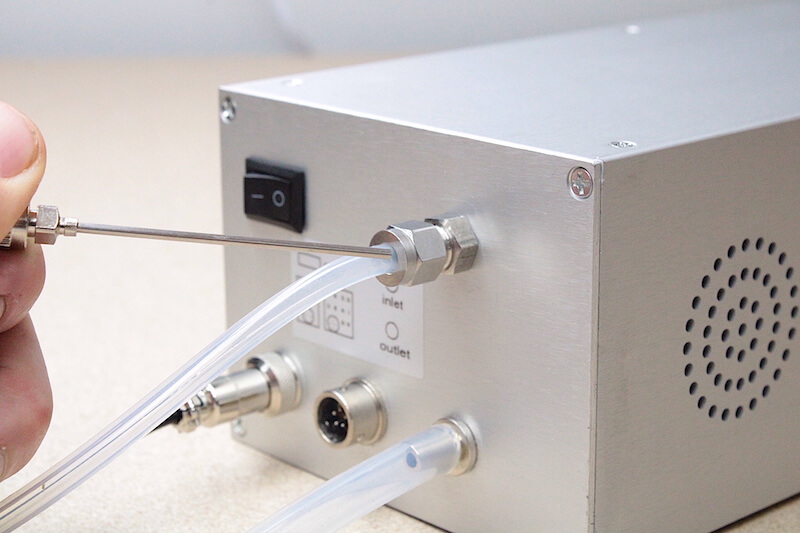
Helium Gas Leak detector necessities?
- Safety: Helium gas is often used in various industries and applications. While it’s non-toxic and non-flammable, the potential for leaks can lead to oxygen displacement in confined spaces, posing health risks. Detecting leaks early prevents accidents and health hazards.
- Environmental Responsibility: Helium is a finite resource, and wastage through leaks has economic and environmental implications. Detecting leaks helps conserve this valuable gas and promotes responsible resource management.
- Efficiency: Detecting and addressing leaks promptly prevents wastage, ensuring that systems operate efficiently and effectively. This is crucial in industries where even small leaks can lead to operational inefficiencies and increased costs.
- Regulatory Compliance: Many industries are subject to strict regulations regarding gas containment and safety. Employing helium gas detectors ensures compliance with these standards and safeguards against potential legal and financial consequences.
- Cost Savings: Detecting leaks early reduces gas wastage, leading to cost savings over time. Timely intervention prevents repair costs, equipment damage, and potential shutdowns due to gas leaks.
- Quality Assurance: Industries like manufacturing and electronics rely on leak-free systems for optimal performance. Helium gas detectors help maintain quality and reliability in various applications.
- Peace of Mind: Using a helium gas detector provides assurance that systems are leak-free, promoting a sense of security and confidence among professionals and homeowners alike.
How Does a Helium Gas Sensor Work?
Detecting helium gas can be a challenge due to its inert nature. Chemical methods, such as redox reactions used in electrochemical and semiconducting metal oxide gas sensors, are ineffective. Instead, a physical method that relies on the difference in thermal conductivity between helium and air is used. This method involves using a thermal conductivity detector (TCD), also known as a katharometer, which compares two thermal elements in normal air with the gas sample. If the sample gas contains helium, the change in conductivity due to the physical thermal change is detected and translated into a calibrated helium concentration.

Helium Gas Detection Applications?
Helium leak detection is used to identify and locate leaks in systems that use helium gas. Helium is an inert gas with a low molecular weight, which makes it an ideal tracer gas for detecting leaks in various types of systems, including vacuum systems, refrigeration systems, and pipelines.
Helium leak detection is commonly used in the following industries:
- Aerospace: Helium leak detection is used to ensure that critical components, such as fuel tanks and hydraulic systems, are free of leaks before they are put into service.
- HVAC and refrigeration: Helium leak detection is used to identify leaks in refrigeration systems, which can be harmful to the environment and expensive to repair.
- Medical: Helium leak detection is used to ensure that medical equipment, such as MRI machines, are free of leaks, which can affect the accuracy of the results.
- Semiconductor manufacturing: Helium leak detection is used to identify leaks in the manufacturing process, which can lead to defects in the final product.
Is Helium Gas Dangerous for Home?
Helium gas itself is not inherently dangerous for home use due to its non-toxic and non-flammable nature. It is widely used for various purposes, including inflating balloons and as a coolant in medical and scientific applications.
While helium gas is generally safe, it can displace oxygen in enclosed spaces if released in significant quantities, potentially leading to oxygen deprivation. Additionally, the use of helium gas in a confined area without proper ventilation might lead to the accumulation of helium, causing breathing difficulties.
Therefore, while helium gas is safe when handled properly, it’s essential to use it in well-ventilated areas and avoid any practices that could lead to oxygen displacement or gas accumulation.
Types of Helium Gas Leak Detectors
Helium Gas Leak Detectors come in various types, each equipped with distinct mechanisms for efficient leak detection.
| 🦜 FUN FACT TIME 🦜 |
| Helium is used to cool MRI machines and other medical equipment because it has a very low boiling point and can be easily liquefied. |
Mass Spectrometer Leak Detectors
These cutting-edge devices employ mass spectrometry principles to precisely detect even the minutest traces of helium gas. Their exceptional accuracy and sensitivity make them invaluable in critical applications such as aerospace and scientific research.
Sniffer Probes
Offering portability and ease of use, sniffer probes are handheld tools equipped with a sensing tip that “sniffs” for helium gas. These detectors are versatile, making them suitable for inspecting intricate systems and confined spaces.
Electronic Leak Detectors
Employing sensors, electronic leak detectors identify helium gas leaks and provide visual or auditory alerts. These detectors are user-friendly and widely used in various industries, offering reliable performance for routine leak checks.
Tracer Gases and Vacuum Pumps
Utilizing a combination of helium as a tracer gas and vacuum pump, these detectors pressurize systems to identify leaks. This method is particularly effective for large-scale applications such as refrigeration and air conditioning systems.
Each type of helium gas leak detector caters to specific needs, whether it’s ultra-high sensitivity, portability, or ease of use. Choosing the appropriate type depends on the intended application and the level of accuracy required, allowing homeowners and industries to benefit from comprehensive leak detection solutions.
How Does a Helium Gas Leak Detector Work?
The functioning of a Helium Gas Leak Detector is rooted in its ability to identify and quantify helium gas molecules that escape from compromised systems. These detectors utilize a range of sophisticated techniques to achieve this feat.
One common method involves creating a vacuum or low-pressure environment within the detector’s chamber. As helium gas leaks into the chamber, it is then subjected to a variety of detection mechanisms, such as thermal conductivity or ionization. These mechanisms interact with the helium atoms, resulting in distinctive responses that are measurable.
In thermal conductivity-based detectors, helium gas differs in its thermal conductivity compared to the air present in the chamber. This difference causes a change in temperature, which is then detected and translated into a signal.
In ionization-based detectors, helium atoms are ionized by a radiation source, and the resulting ions are measured to indicate the presence of helium.
Helium Gas Leak Detector Considerations?
Selecting the ideal Helium Gas Leak Detector requires research and consideration of the following:
- Cost Considerations: Evaluate your budget and balance it with the features you require. While advanced detectors might come at a higher price, they often provide greater accuracy and sensitivity but may be overkill for some applications. Helium leak gas analyzers cost from $1000 up to $5000.
- Accuracy and Sensitivity Levels: Assess the sensitivity needed for your specific applications. If you’re dealing with critical systems, investing in a detector with higher sensitivity can offer more reliable leak detection.
- Size and Portability: Consider the portability of the Helium Leak Detector. Handheld models provide convenience for inspecting various areas around the house, while larger models might be better suited for stationary applications.
- Ease of Use: Opt for a user-friendly detector with clear instructions and intuitive interfaces including video operation tutorial and calibration tutorials. This ensures that you can efficiently operate the detector and interpret its readings.
- Durability and Maintenance: Choose a detector built to withstand daily use. Sturdy construction and low-maintenance features contribute to the longevity of the device.

Who Uses a Helium Gas Leak Detectors
Helium Gas Leak Detectors are utilized by various industries and professionals who rely on precise leak detection for safety, efficiency, and quality assurance. Some of the key users include:
- Manufacturing and Industry: Industries such as automotive, aerospace, electronics, and semiconductor manufacturing use helium gas leak detectors to ensure the integrity of components, systems, and equipment.
- HVAC and Refrigeration: Technicians in the HVAC and refrigeration industry use these detectors to identify leaks in air conditioning systems, refrigeration units, and cooling systems.
- Medical and Healthcare: Helium leak detectors are employed to maintain the safety and efficiency of medical equipment, such as anesthesia machines, cryogenic systems, and vacuum systems.
- Research and Laboratory: Researchers, scientists, and laboratory technicians use these detectors to ensure vacuum integrity in experiments, chambers, and specialized equipment.
- Energy and Utilities: Professionals in the energy sector utilize helium gas leak detectors to inspect pipelines, gas storage facilities, and distribution systems to prevent gas leaks and ensure operational efficiency.
- Environmental Monitoring: Helium gas detectors play a role in environmental monitoring by detecting leaks in systems that contain harmful gases, ensuring compliance with environmental regulations.
- Safety Inspections: Inspectors, safety personnel, and regulatory authorities use helium gas leak detectors during safety inspections to ensure compliance with safety standards and regulations.
Helium Gas Leak Detector Tips
Using a Helium Leak Detector requires adherence to crucial safety tips to ensure effective and safe operation when performing Helium Leak Detection:
- Read the Instructions: Familiarize yourself with the manufacturer’s instructions and guidelines before using the detector to ensure proper usage.
- Ventilation: Perform leak detection in well-ventilated areas to prevent the buildup of helium gas concentrations and maintain breathable air.
- Ignition Sources: Keep the detector away from open flames, sparks, and ignition sources, as helium gas is non-flammable but could potentially react with such sources.
- Personal Protective Equipment (PPE): Depending on the situation, consider wearing suitable PPE like gloves, safety glasses, or masks to enhance personal safety.
- Regular Calibration: Periodically calibrate the detector as recommended by the manufacturer to maintain accurate and reliable performance. Ensure you calibrate with NIST Traceable Helium Gas Sources. Operation tests are also important via BUMP Testing.
- Emergency Plan: Develop an emergency plan outlining steps to take in case of significant leaks, including evacuation procedures and contacting relevant authorities.
- Avoid Direct Inhalation: Although non-toxic, inhaling helium can lead to oxygen displacement. Avoid inhaling helium from the detector or other sources.
- Safe Storage: Store helium gas cylinders securely in well-ventilated, upright positions, away from heat sources and direct sunlight.
- Proper Disposal: Dispose of helium cylinders and other equipment following local regulations and guidelines.
- Maintenance: Regularly inspect the detector for signs of wear or damage and promptly address any issues to ensure its continued safety and effectiveness.
How Much Does a Helium Gas Leak Detector Cost?
Helium gas leak detectors start from about $1000 up to $10,000. Some brands include:
- GL Sciences Helium Leak Detector
- Ion Science Helium Gas Leak Detector
- Infinicon Helium Leak Sniffers
- Nolek Helium Sniffer
- Forensics Detectors Helium Analyzer (Generic)
Does Helium Leak More Than Air?
Yes, helium’s smaller molecular size allows it to leak more easily through tiny openings compared to air.
Leak Rate for a Helium Leak Detector?
Helium leak detectors can detect leaks at extremely low rates, even as low as 1×10^-10 atm cc/s. On the contrary, the Forensics Detectors Helium Leak Checker can detect down to 0.1 ppm of helium.
Is the Helium Leak Test Safe?
Helium leak tests are safe as helium is non-toxic, non-flammable, and environmentally friendly, making it a preferred choice for leak testing.
What is the difference between a Helium for Leak Detector and a Helium Leak Checker?
They are both the same. They both sniff helium gas. A Helium’s low density and inert properties make it an ideal tracer gas for detecting leaks, ensuring accurate results without compromising safety.
Helium Detector Calibration?
as detector calibration is a crucial technical process that should be carried out every 6 to 12 months to guarantee the precise functioning of your helium gas leak detector. As time goes by, the helium sensor may become less accurate and deteriorate, making gas calibration necessary for accurate and repeatable measurements.
The gas calibration process involves exposing the helium analyzer to a traceable concentration of test gas. While we offer a calibration service, you may choose to calibrate the analyzer yourself using our step-by-step calibration tutorial. To do so, you will need a calibration kit that includes a few essential items.
Calibration T-piece & Tubing
Calibration Gas (He)
Calibration Gas Regulator (C10)
How is A Helium Leak Detector Used?
Using a helium leak detector is a straightforward process. To get started, turn on the analyzer and wait for it to begin operating after the countdown.
If you’re using the detector for leak detection, attach the tubing and needle, ensuring there are no blockages. Then, perform a quick bump test to verify that the analyzer is functioning correctly. Assuming that the analyzer is within the calibration period, you’re good to go. However, if you want to ensure maximum sensitivity and accuracy, it’s best to calibrate the unit.
Once the bump test is complete, take the probe and scan the area of interest, moving at a rate of approximately 2 seconds per inch. Be patient and thorough to detect any potential helium gas leaks.
What is the Difference Between a Vacuum Leak Detector and a Helium Leak Detector?
A helium leak detector is a device designed to detect and locate leaks of helium gas from a system or equipment. It works by drawing in air from the surrounding area and passing it through a chamber where it is exposed to helium gas. If there is a leak in the system, the helium gas will enter the chamber and trigger an alarm, indicating the location of the leak.
On the other hand, a vacuum leak detector is a device used to detect and locate leaks in a vacuum system. It works by creating a vacuum in the system and then measuring the rate at which the vacuum pressure drops. If there is a leak in the system, the pressure will drop faster than expected, indicating the location of the leak.
The main difference between the two types of detectors is that a helium leak detector is specifically designed to detect leaks of helium gas, while a vacuum leak detector is designed to detect leaks in a vacuum system, regardless of the type of gas involved. Additionally, a helium leak detector is typically more sensitive and accurate than a vacuum leak detector when it comes to detecting helium leaks.
What is Helium Leak Detection and its Uses?
Helium leak detection is a method of finding leaks in a system or component by using helium as a tracer gas. Helium is a very small and light gas, so it can easily seep through even the smallest cracks and gaps. When helium leaks out of a system, it can be detected using a helium leak detector.
Helium leak detection is used in a wide variety of industries, including:
- Aerospace: to test aircraft and spacecraft for leaks in the pressure hulls and other critical components.
- Medical devices: to test medical devices for leaks that could allow fluids or gases to escape.
- Semiconductors: to test semiconductor wafers and packages for leaks that could contaminate the devices.
- Vacuum systems: to test vacuum chambers and other systems for leaks that could allow air or other gases to enter.
- Piping systems: to test piping systems for leaks that could release hazardous fluids or gases.
- Pressure vessels: to test pressure vessels for leaks that could cause them to fail.
There are two main types of helium leak detectors: mass spectrometer leak detectors and residual gas analyzers. Mass spectrometer leak detectors are more sensitive and can detect smaller leaks, but they are also more expensive. Residual gas analyzers are less sensitive, but they are less expensive and can be used to detect leaks in a wider range of gases.
The choice of helium leak detector depends on the specific application and the size of the leaks that need to be detected.
Here are some of the benefits of using helium leak detection:
- It is a very sensitive method of leak detection, capable of detecting leaks that are very small.
- It is a non-destructive method of leak detection, so it does not damage the system or component being tested.
- It is a versatile method of leak detection, capable of being used in a wide variety of applications.
Here are some of the limitations of using helium leak detection:
- It can be a relatively expensive method of leak detection.
- It can be a time-consuming method of leak detection, especially for large systems.
- It can be difficult to use helium leak detection in some applications, such as those involving flammable or hazardous gases.
Overall, helium leak detection is a valuable tool for finding leaks in a wide variety of systems and components. It is a sensitive, non-destructive, and versatile method of leak detection that can be used in a wide range of applications.
Conclusions
- A Helium leak checker detects helium content in gas mixtures and leaks.
- A Helium leak checker is useful in various applications, including welding, rocket propulsion, cryogenics, MRI, meteorology, and research and development.
- Helium gas detectors are known by different names, such as helium gas leak detectors, helium gas sniffers, helium gas analyzers, and mass spectrometer leak detectors.
- MRI scanners use helium to cool down their superconducting magnets, making helium gas detectors essential for safety and efficiency.
- Helium gas detectors are crucial for ensuring the reliability and safety of various industrial systems that use helium gas.
The Author
Dr. Koz resides in the Palos Verdes Peninsula in Los Angeles, California. He is a subject matter expert on gas leak detectors, gas sensor technology, gas detectors, gas meters, and gas analyzers. He has been designing, building, manufacturing, and testing toxic gas detection systems for over 20 years. Every day is a blessing for Dr. Koz. He loves to help customers solve their unique problems. Read more about Forensics Detectors here.
Email: drkoz@gasleakdetector.com
Phone: +1 424-341-3886

